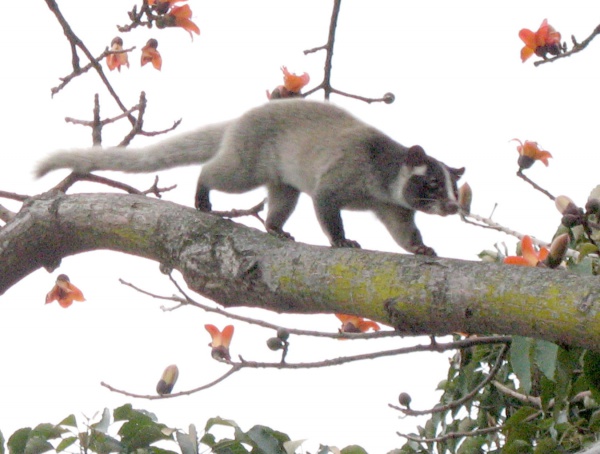Facts About Gem-faced (or Masked) Palm Civet
The masked palm civet, also known as the gem-faced civet, is a fascinating creature native to the Indian subcontinent and Southeast Asia. It has been listed as Least Concern on the IUCN Red List since 2008, thanks to its presence in protected areas, adaptability to changing habitats, and stable population numbers. The genus Paguma, to which it belongs, was first described by John Edward Gray in 1831, and all its forms are considered a single species.
This civet is easily recognizable by its reddish to grey fur and distinctive black and white facial mask. Unlike some other civets, it doesn’t have spots or stripes. Its tail is impressively long, measuring more than two-thirds the length of its head and body. These animals inhabit the northern parts of the Indian subcontinent and Southeast Asia, including countries like China, Malaysia, Thailand, Vietnam, Borneo, Sumatra, and even Japan. They thrive in various types of forests and can adapt to disturbed environments.
Masked palm civets are nocturnal and prefer to live alone. Their diet is quite varied, consisting of rats, birds, fruits, and insects. They are also partly arboreal, meaning they spend some of their time in trees. These civets are polyestrous, which means they have two breeding seasons each year, and they can live up to 15 years in captivity. Despite their adaptability, they face threats from habitat destruction and hunting, especially in southern China and Vietnam.
The masked palm civet gained some notoriety during the 2003 SARS outbreak in China. The virus was linked to the consumption of civet meat in live-animal markets. SARS was found in masked palm civets and other animals in these markets, establishing a genetic link between the virus in civets and humans.
In terms of conservation, the masked palm civet enjoys protection in countries like Malaysia and China, though not in Thailand and Nepal. In India, it is listed on CITES Appendix III. While the masked palm civet plays an important role in its ecosystem, it faces challenges that require ongoing conservation efforts to ensure its survival.

 Malaysia
Malaysia